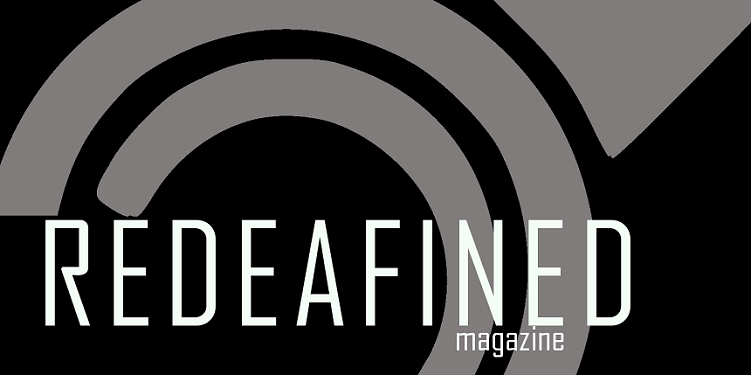
Recently a follower on Twitter expressed his outrage and disbelief at a statistic being passed around in his class about a shockingly low reading level for deaf students. Unfortunately I've seen this statistic being presented in various permutations including that deaf people in general either cannot or do not surpass a fourth grade reading level, particularly those who aren't implanted. I'm happy to report these statements are false. However, statistics do show we've got a lot of work to do on the education front (and not just for deaf students, either).
The Real Deal:
According to Marc Marschark, the Director of the Center for Education Research Partnerships at NTID, the statistic appears in a 2000 study by Carol B. Traxler, which purports that, after the analysis of SAT reading comprehension scores, the median (not the average) scores for deaf high schoolers were around the fourth grade level. The SATs not being a definitive measure of anyone's literacy, the information should be taken seriously, and also with a grain of salt.
While the statistic is still a frightening one, it does mean that fifty percent of deaf high schoolers are reading above a fourth grade reading level. Another thing to note is that this statistic is often leveraged as a way to speak out against certain methods of deaf education. In reality, the scores are not delineated by d/Deaf self-identification, and included all deaf students, whether or not the student's primary mode of communication was ASL, SEE or speech, and regardless of whether he or she wore hearing aids, a cochlear implant or nothing. Check out Marschark's full interview with Hands and Voices on the subject here.
Why are Deaf Kids Behind?
Several reasons, really. Firstly, the statistics from 2000 would represent 12th graders born in 1988, where the average detection rate for deafness would have been 2.5-3 years of age--a lot of missed time in the early language acquisition window. Currently, 97 percent of American infants are screened for hearing loss before they even leave the hospital, so it remains to be seen if this early detection will give deaf students a leg up. Secondly, ninety percent of deaf children are born to hearing parents, and 75 percent of parents never learn to sign conversationally. This means that deaf children don't have access to language in the home, and are not being read to like their hearing peers. Finally, as mentioned, the reading level statistics haven't been categorized by students' communication or education methods. That is to say, according to the statistics, oral deaf mainstream students are just as behind as their Deaf school ASL-using peers, and no one has bothered to analyze the data in such a way that would actually help us understand how best to educate deaf children.
Deaf vs. Hearing: How do we stack up?
So what do we do now?
For all our students, deaf and hearing, it is imperative that the curriculum in our schools be improved. Students will never learn to read past a fifth-grade level if it is never required of them. As for deaf students, is the fourth grade level a glass ceiling? Absolutely not. Marschark compiled data on a school for the deaf in which the curriculum was revised over a four year period to focus on reading and language comprehension skills, and reports that both the classes of 2008 and 2009 (high schoolers at the time of the interview) were reading on grade level or above. In short: if we teach them, students-- deaf or hearing-- can and will learn.
Further reading: Deaf School vs. Mainstreaming Pros and Cons
Editor's Note: This article was updated on 2/28/2013

You don't mention that the stats would show that 50% of the deaf students are therefore reading at BELOW the level of a 4th grader. And the test was not testing "at grade level" but actually comparing the score vs the score of the average hearing student in 4th grade. So to be clearer, it is not that they are reading at the 4th grade level, but that they are scoring the same on a reading test as an average hearing 4th grade student.
ReplyDeleteMiss Kat's parents- Thanks for your comment. You're right; though we didn't specifically mention it, it's implied by the statistic that 50% of deaf students reading above the 4th grade level also means there are 50% of students reading at or below that level. Obviously, as noted in the post, we have a lot of work to to do in the field of reading education for deaf children (and hearing ones, for that matter). The concern with this post was mainly to dispel the incorrect quotation of the statistic as 1. an average reading level and 2. a measure specific to signing children's reading levels, of which it is neither.
DeleteExcellent article redeafined. Enlightening and extremely constructive. I'm not sure what Miss Kat is trying to say... The article is actually highlighting the issues--portraying them accurately--and then encouraging more modern and appropriate educational approaches using both ASL and English as a solution. Very good.
ReplyDeleteMedian is one statistic of three (median, mode, mean) that represents an average of a range of numbers, therefore the 4th grade reading level being reported as an 'average' is still accurate. The larger issue here is the inaccurate implying or perceiving of the median representing ALL deaf students having a 4th grade reading level when in fact half do have a better than 4th grade reading level.
ReplyDeleteI enjoyed reading your article and was planning on using it as the basis for my final paper in a class at Gally. However, after further examination, I realized that it is very misleading. Using the citation that the average hearing 12th grader reads at a 5th grade level as the means for comparison to debunk the "4th grade reading level statistic" is misrepresenting the facts. The study that is referenced found that of the top 40 books assigned to 12th graders to read, most are written at the 5th grade reading level. This finding does not represent the actual reading level of the average 12th grader which, according to the National Adult Literacy Survey and the 2003 National Assessment of Adult Literacy, is around 9th grade. Also, while it is important to note that there are plenty of highly successful Deaf/HoH readers and published authors, the median and mean reading level of Deaf/HoH high school graduates has been about 4th grade for the past 3 decades. It is important to note though that the most recent study confirming the "4th grade statistic" was performed in 2003. Therefore, the participants of the study would have been born in the mid-1980's, at a time when the average time of detection of deafness was between 2.5-3 years (it's currently around 11 months), putting these students at a clear disadvantage to their peers who were exposed to language from birth. Compounding the issue, Deaf/HoH children are read to less often and are less likely to be surround by people who are fluent in their natural language (ASL, of course). Children who are identified as Deaf/HoH early and receive early intervention can expect to develop grade-level literacy skills.
ReplyDeleteHi Madeline. Thanks for reading. We never suggested that the average US adult read at a 5th grade reading level; in fact, we cited the same statistic you've brought up here. In any case, we've checked the article to make sure everything reads more clearly. We appreciate your input!
Delete: )
DeleteI agree that this statistic has frequently been misused to advance a particular agenda (probably all agendas, at one time or another!). But I want to note that I can distinctly remember seeing this "average 3rd to 4th grade reading level" being used back in the 1980s, and it was already being thrown about as a "commonly known" figure. So I know it did not originate with that study in 2000, this statistic goes back MUCH further than this ... probably even earlier than the 1980s, because that's just when I first noticed it as a teenager old enough to start noticing these things.
ReplyDeleteAny chance that someone out there has researched more closely where the original statistic really comes from? I think in order to really explode the myth for once and for all might require a more detailed history of how this got started and how it proliferated. Of course this should be supplemented by whatever the true facts are to the best they are known.
You're definitely right that the original statistic appears at some point before the 2000 study;however, we're more concerned with debunking the most recent statistic, rather than quarreling over the ones already obsolete due to their 20+ years outdatedness.
DeleteThanks for the feedback. And thanks for reading! :)
"Several reasons, really. Firstly, the statistics from 2000 would represent 12th graders born in 1988"
ReplyDeleteI was born in 1988, and in the year 2000 I was 12 years old...not a 12th grader...
The Early Intervention issue is why I'm such a big fan of parents using Cued Speech - since it's communication with visual English.
ReplyDeleteAs an ADA advocate, I often encounter doctors denying patients the services of a sign language interpreter, asserting that they were able to effectively communicate with the patient by passing notes back and forth. I readily acknowledge that there are individuals who are deaf who read and write English well, but remain concerned about those members of the deaf community who use sign language as their primary means of communication, who do not read and write English above a 4th grade level, and when trying to do so, do not have the vocabulary and syntax in English that would result in effective communication. I am concerned that by asserting that passing notes back and forth results in effective communication, when it does not for many members of the deaf community, it creates the incorrect impression, especially among health care professionals, that they do not have to provide sign language services to patients and companions who are deaf, who rely on sign language as their primary means of communication. This does a disservice to the deaf community, and makes ADA advocacy more difficult. I would appreciate getting your thoughts on this. Write to me at mdubin@pobox.com, and follow me on Twitter at @ADAexpertise.
ReplyDeleteThis is a good article to us which is very essential to me as well because I always write in the Debunking the "Fourth Grade Reading Level" Statistic which is very important to custom writing services and I must follow the discussion which will be very informative to me.
ReplyDelete